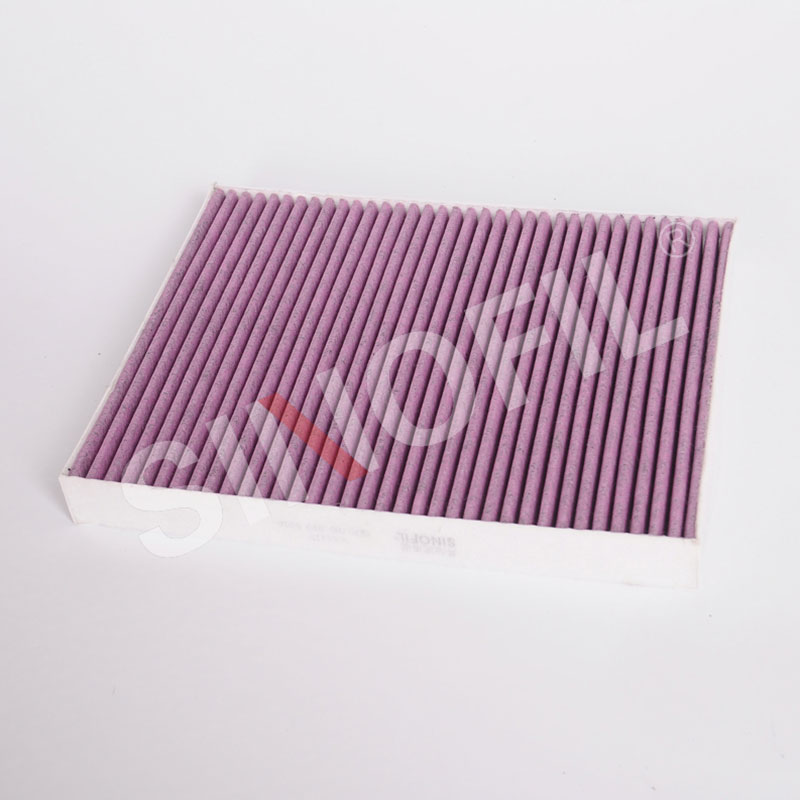Home / News / How often should the activated carbon cabin filter be replaced to maintain optimal air quality?
The activated carbon cabin filter should typically be replaced every 12,000 to 15,000 miles (20,000 to 24,000 km) or once a year, whichever comes first, to maintain optimal air quality in a vehicle. However, this recommendation can vary based on several factors:
Factors Influencing Replacement Frequency:Driving Conditions:Urban Areas and Heavy Traffic: If you drive frequently in urban environments, high-traffic areas, or places with poor air quality, the filter may become clogged more quickly due to higher levels of pollutants, dust, and odors. In such cases, replacement might be needed every 6,000 to 10,000 miles (10,000 to 16,000 km).Rural Areas or Cleaner Environments: If you drive mostly in rural areas with cleaner air, the filter may last longer, potentially up to 15,000 miles (24,000 km) or more.
Seasonal Factors:Pollen Season: During spring or times of high pollen counts, the filter may accumulate more particles and require more frequent replacement.Winter or Rainy Season: In areas with heavy rain or snow, the filter may also get clogged faster due to increased moisture and debris.Air Quality and Pollution Levels:High Pollution Areas: Driving in areas with significant air pollution, industrial zones, or dusty environments can shorten the lifespan of the filter.

Vehicle Usage:Frequent Short Trips: If you frequently make short trips, the filter may need to be replaced more often, as it doesn't have a chance to dry out or clear contaminants effectively.Long Commutes: For vehicles used for long daily commutes, the filter might accumulate more dust and debris, requiring more frequent replacement.Signs That Indicate Replacement is Needed:Reduced Airflow: If you notice a decrease in airflow from the air conditioning or heating system, the filter may be clogged and in need of replacement.
Unpleasant Odors: Persistent unpleasant odors inside the vehicle, even after cleaning, can indicate that the activated carbon in the filter is saturated.Fogging Windows: If the windows fog up easily and do not clear quickly, it could be due to a clogged cabin filter restricting airflow.Allergy Symptoms: Increased allergy symptoms or respiratory discomfort while driving may indicate that the filter is not effectively trapping allergens and pollutants.Best Practices for Maintenance:Regular Inspections: Periodically inspect the cabin filter, especially if you drive in harsh conditions. Check for signs of excessive dirt, dust, or mold.Follow Manufacturer's Recommendations: Always refer to the vehicle manufacturer’s guidelines for specific recommendations on when to replace the cabin filter.Stay Ahead of Problems: Replacing the filter before it becomes fully clogged ensures optimal air quality and the efficient operation of the vehicle's HVAC system.
By following these guidelines and considering specific driving conditions, you can maintain the effectiveness of the activated carbon cabin filter and ensure clean, fresh air inside your vehicle.



 English
English Español
Español











 ++86 183 3391 1399
++86 183 3391 1399


 +86 183 3391 1399
+86 183 3391 1399 sinofil155@peko-filter.com
sinofil155@peko-filter.com +86 187 3296 0060
+86 187 3296 0060 Wangshigong Village, Wei County, Xingtai City, Hebei Province, China
Wangshigong Village, Wei County, Xingtai City, Hebei Province, China
